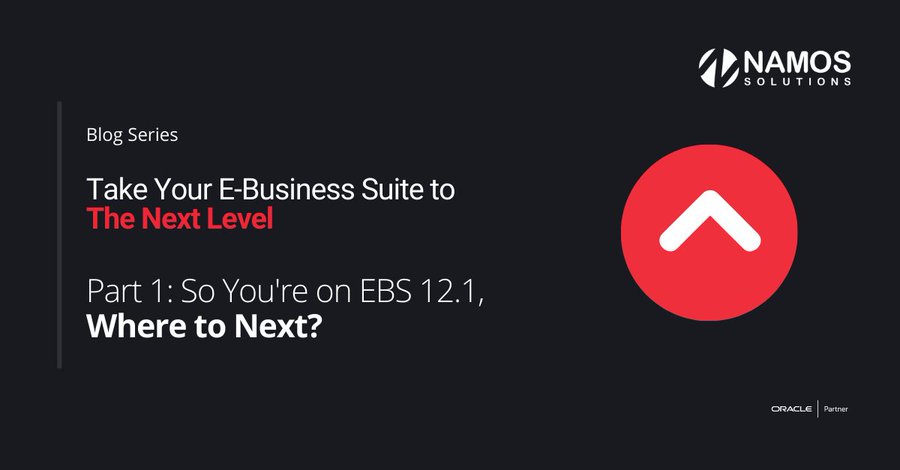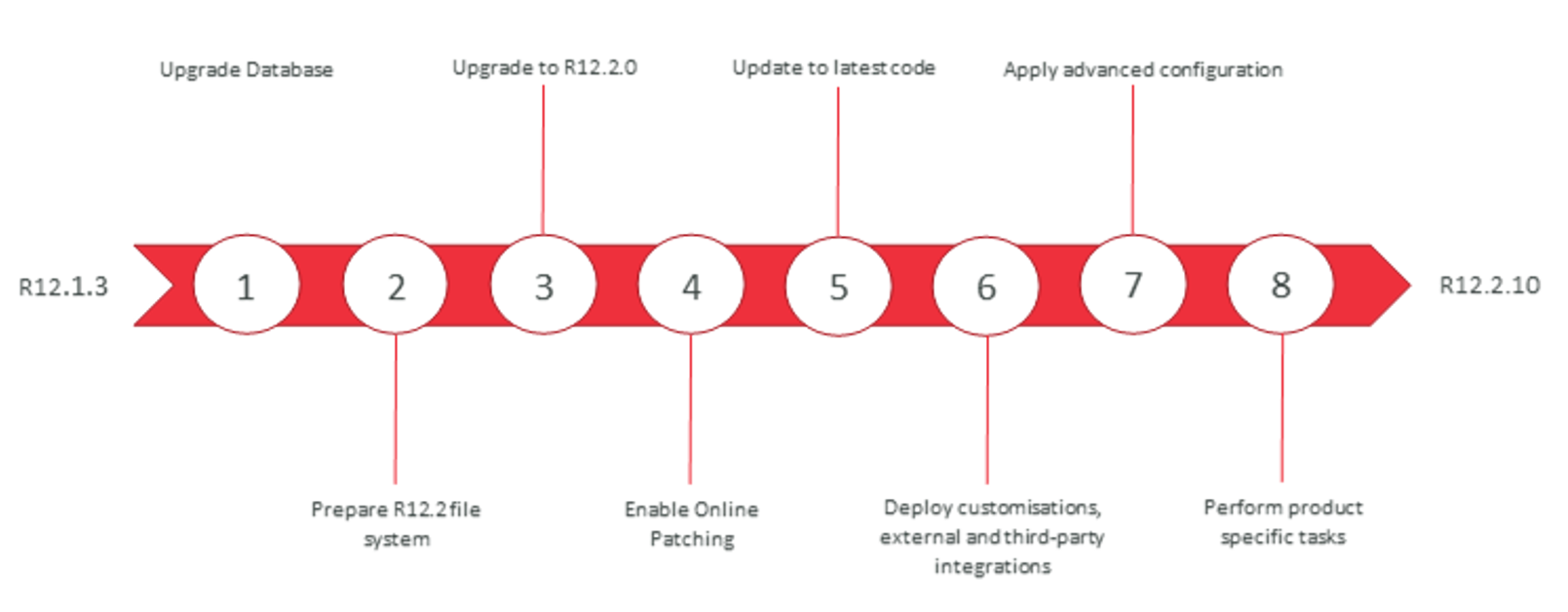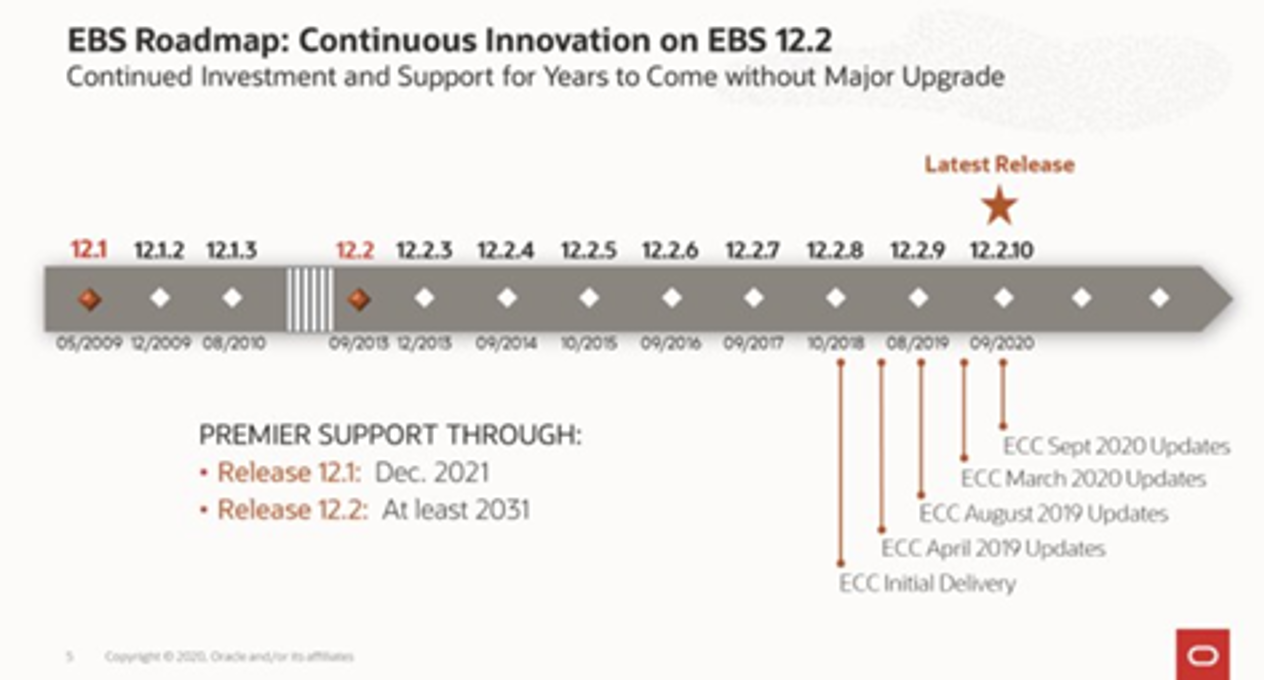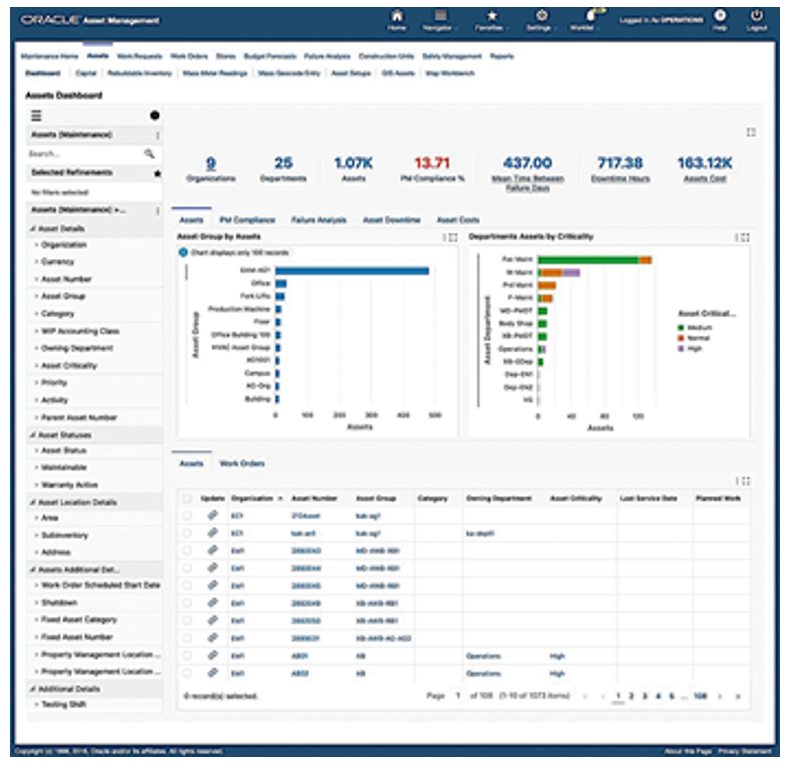
Authors: Simon Clarke, IaaS/DBA Practice Lead | JJ Millen, DBA Consultant, Namos Solutions
Introduction
In this three-part blog, we will discuss the imminent expiry of Premier Support for Oracle E-Business Suite (EBS) Release 12.1.3. With the ever-changing IT landscape, the options are diverse and can be confusing. We will break down the available choices, highlight some common pitfalls and share our wealth of experience to help you identify the best upgrade path for your business.
Why is action required?
The December 31st 2021 deadline for E-Business Suite Release 12.1.3 Premier Support is fast-approaching. This means you will no longer receive any new bug fixes, updates (legislative or otherwise), or security patches for E-Business Suite. So there is an urgent need for businesses to make a decision and at least start to move.
What are the options available?
- Move to Oracle Cloud
- Upgrade to E-Business Suite Release 12.2
- Migrate to Oracle Cloud Infrastructure (OCI)
- Oracle Advanced Customer Services (ACS) Support - If your transition or upgrade project will take longer than January 2022, Oracle ACS can help fill the support gap with your legacy Oracle E-Business Suite Release 12.1.3.
Take Your E-Business Suite to the Next Level – Part 1: Upgrading your E-Business Suite Environment On-Premise
What are the considerations for remaining on-premise and upgrading E-Business Suite? Cloud offerings are becoming more and more prevalent, and it may seem futile to dispute the direction of the industry. However, there are still good business driven justifications for staying on-premise.
The ‘Upgrading On-Premise’ Option
The big question is: “Why choose this option?”
- If you have new hardware with sufficient capacity, and you don’t yet wish to make the jump to cloud services.
- You wish to retain complete ownership of your servers.
- As an organisation, you’re waiting to see market trends before making the decision.
- Your existing DR strategies are established and mature, so you don’t want to re-write the book.
Timeline
From conception to delivery Release 12.1.3 to 12.2 upgrade projects typically take around nine months, so time really is short. Here is an overview of the most significant workloads for a 12.2 upgrade that you will need to factor in:
- Identification and redevelopment of customizations - The complexity of this workload is often vastly underestimated. During this stage, it is very common to discover that a large proportion of customizations have been forgotten or left undocumented. The redevelopment is largely due to the changes required to satisfy the new Online Patching functionality.
- The upgrade - There should be several non-production iterations of the upgrade, following rigorous testing procedures. These iterations will require experienced E-Business Suite DBAs who should be familiar with new concepts such as Online Patching and Enterprise Command Centers (ECC). The project iterations will require significant infrastructure, you need to ensure that you have the capacity to resource this.
- Testing - Your existing end-to-end testing, be it automated, scripted or documented, will need to be updated and enhanced to reflect the new functionality in R12.2.
- Training - User training will also require some dedicated time to bring your users up-to-speed with the new interface and updated procedures.
Upgrade Overview

- Upgrade the Database- Upgrade to minimum version or latest certified version.
- Prepare R12.2 file system- Use Rapid Install to lay down the file system and tech stack using latest startCD and apply latest apps tech stack patches.
- Upgrade to Release 12.2.0- Apply the latest AD upgrade, CUP, EBS pre-install patches. Run in 12.2. merged upgrade driver and run Rapid install in ‘configure’ mode.
- Enable Online Patching- Apply Online Patching Readiness Report Patch, required updates to custom code and the enablement patch.
- Upgrade to the latest code- Apply the latest AD-TXK RUP, R12.2 RUP, post upgrade steps, security patches and NLS patches.
- Deploy custom code, external integrations and third-party integrations- Deploy re-developed CEMLIs, reconfigure integrations, and apply language patches if required.
- Perform advanced configurations- Scaling up and out based on performance requirements, Secure configuration, DMZ configuration, Disaster recovery planning and preparation.
- Perform product specific tasks- Several products include tasks that must be performed after the upgrade is complete.
Upgrade Benefits
Long Term Support for 12.2.X
Once you upgrade to 12.2, you will have the comfort of knowing that with only minor release updates your E-Business Suite will remain supported until at least 2031.

Continuous Innovation
As well as long term support, R12.2 also shifts to Oracle’s new “continuous innovation” model. This means that new functionality is regularly delivered and due to the separation of the EBS technology stack from EBS applications code updates, you can quickly deploy new versions of the EBS tech stack without the additional obligation of upgrading the EBS applications code.
Online Patching
One of the most welcome new features of R12.2 is the introduction of Online patching. Dual Filesystems reduce the downtime windows required when a patch is to be applied to your production instance.
Visual Improvements
The front end has been modernized to bring the look and feel in alignment with what is currently available in the cloud applications. Furthermore, it’s been enhanced for use on tablets and mobile devices, with a fingertip friendly interface using touches and swipes.
Enterprise Command Centers (ECC)
The ECC was released back in October 2018 along with R12.2.8, however, it is compatible with R12.2.4 onwards. The latest version is currently V5. What it brings to the E-Business Suite is a holistic view of the data in a modern and interactive user interface. It provides a tool to uncover business insights, and data drill downs to pinpoint relevant action. The ECC eliminates the heavy reliance on custom operational reporting and enables users to intuitively analyze data so they can make confident data driven decisions.

Summary
Whilst there is no easy answer to the “Stay on-prem or migrate to Cloud” conundrum, we have seen there can be good business and cost driven reasons to stay on-premise. Finding the right option is a balance of business needs, short and long-term costs and weighing up the value of new Cloud based features. If staying on-prem is right for your business, there are lots of benefits from upgrading to R12.2.
Tune in for #2, where we delve into what Oracle Cloud Infrastructure can bring to the table.
About Namos Solutions
Namos Solutions are an award-winning Oracle OPN Modernized Partner specializing in the implementation and support of ERP, EPM and HCM business solutions, both in the Cloud and on-premise.
With global experience together with an impeccable track record, our business is built on our passion for delivering successful business transformation. Passion underpins everything we do at Namos – passionate about delivering beyond expectations, earning trust and building long-lasting relationships with our clients.
Many of the world’s most leading organizations trust and rely on us. Our customers can currently be found in USA, UK, Europe, Asia and Africa.
Follow Namos Solutions at LinkedIn and Twitter.
Contact:
Jo Haverfield
Senior Vice President, US
e: jhaverfield@namossolutions.com
c: 206 910-7196
o: 206 552-0511